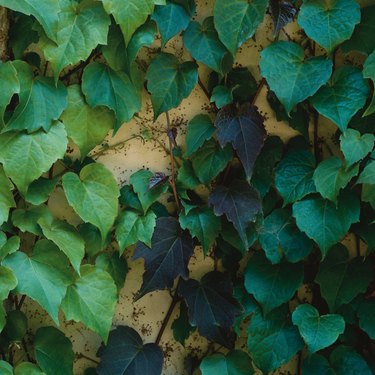
With its glossy green leaves and lovely fall color, Boston ivy (Parthenocissus tricuspidata) grows rapidly and covers many walls and buildings in Boston. Native to parts of Japan and China, Boston ivy thrives in U.S. Department of Agriculture plant hardiness zones 4 through 8. Its lush, thick growth will quickly fill in gaps to provide privacy, and although it is deciduous, its twining vines will eventually grow thick enough to provide privacy even when its leaves have fallen.
Identification
Video of the Day
Boston ivy is a deciduous vine, losing its leaves in autumn after a bright scarlet and purple leaf display. Small green-white flowers appear in summer, followed by blue-black berries. In addition to providing great cover for fences, Boston ivy grows well on trellises and arbors, and as a ground-cover that covers rock piles or controls erosion.
Video of the Day
Growth and Size
Boston ivy grows extremely quickly, often adding 10 feet to its height in a single year, so you can expect Boston ivy to reach the top of a fence in a year. Boston ivy continues to thicken as time passes. Over time Boston ivy can reach heights of 50 feet, and a single plant can spread 5 to 10 feet wide.
Fence Types
Boston ivy attaches itself to surfaces in one of two ways as it grows: it is both a twining vine, meaning it can use tendrils to wrap around structures, and an adhering vine, meaning it uses holdfasts or suckers with an adhesive substance to attach itself. Its tendrils mean you could grow it on a trellis or chain link fence, while its holdfasts make it suitable for growth on wooden fences or brick walls as well.
Management
Because Boston ivy grows both quickly and densely, you should have a fully covered fence within a couple years, depending on the height of your fence and slight cultural variations. Once your fence is covered, you will need to prune it back aggressively. Be aware that once it attaches to a surface using its suckers, the surface retains moisture, making it vulnerable to disease and rot.